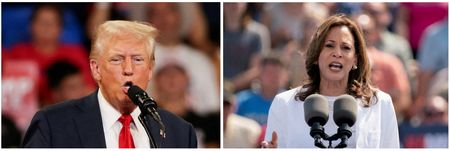With around 50 trading days left until the U.S. elections, the election narrative will become more prominent, following a period where market activity has been largely driven by the Federal Reserve and macroeconomic factors, UBS strategists said.
They expect this shift in focus to occur especially after the September FOMC meeting, where rate cuts are now fully anticipated post-Jackson Hole. Markets are anticipating that the Fed's policy rate will drop to the 3.00%-3.25% range by the end of 2025, which is over 2 percentage points lower than its current level.
The report notes that the S&P 500’s option-implied one-day move for the US elections is currently over 2%, aligning with levels seen in the 2020 election cycle. UBS points out that the VIX election fly, a measure of election-related volatility, has risen slightly but remains below its year-to-date highs.
Drawing parallels with the 2020 U.S. elections and the 2017 French elections, strategists suggest that U.S. equity volatility could follow a similar pattern leading up to and following the election event.
They maintain their view that the 'kink' in the VIX term structure is likely to remain stable or increase as the October options expiry date approaches.
“We imagine some uncertainty could be priced out if polling skews more heavily in either direction, though some level of risk premia would likely remain,” strategists wrote.
In terms of specific sectors, UBS identifies Banks, Clean Energy, Biotech, Mexico, and China Tech as areas where US election risk premia are most pronounced. The bank highlights that these sectors “witnessed some of the largest implied volatility declines post-2020 US elections."
